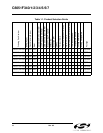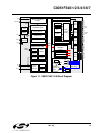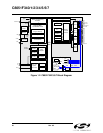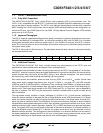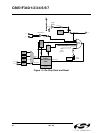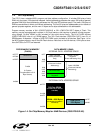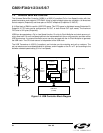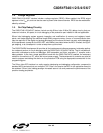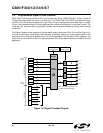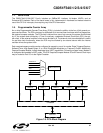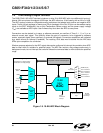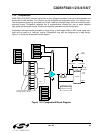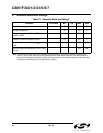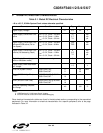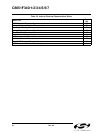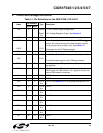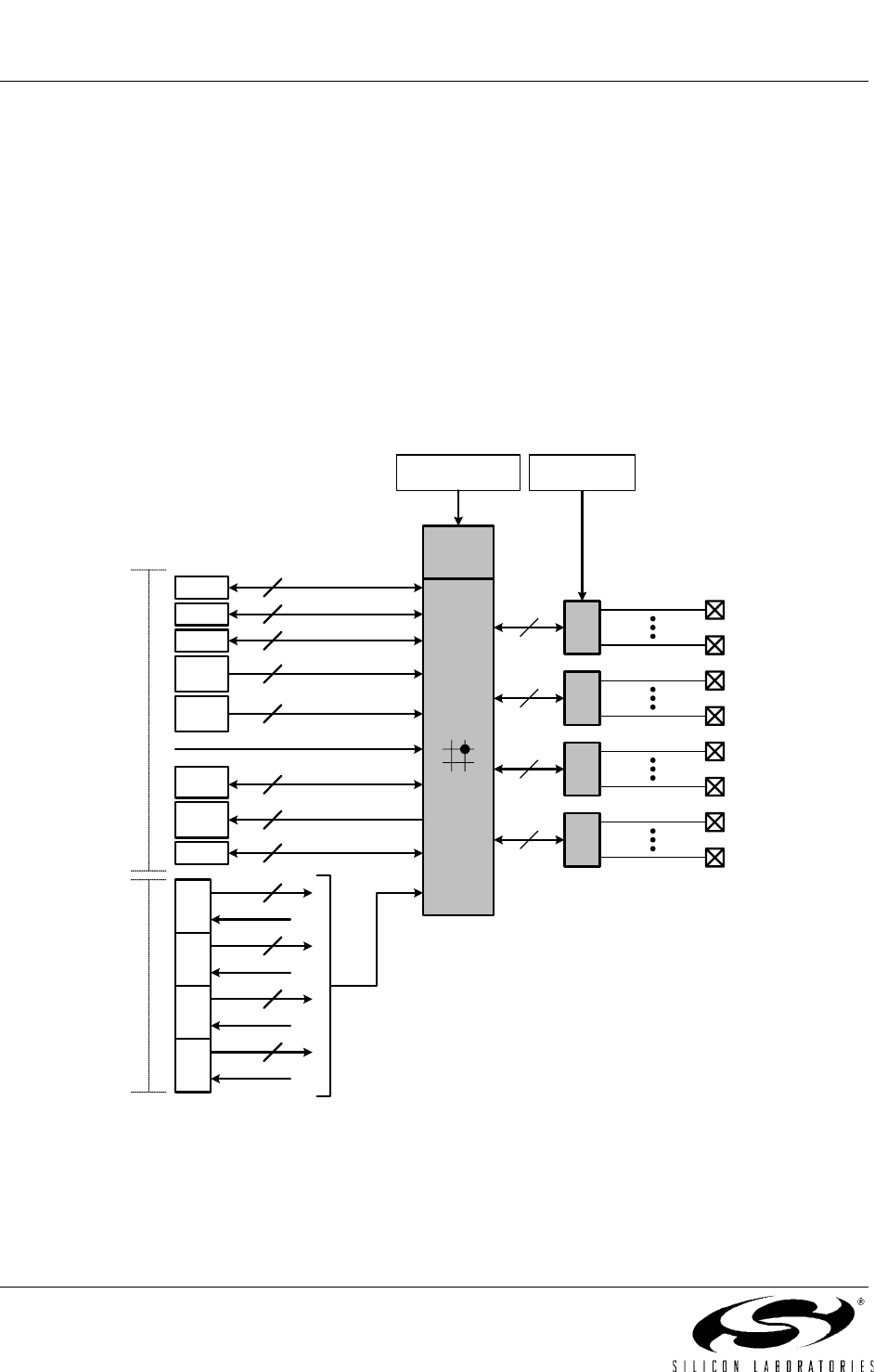
C8051F340/1/2/3/4/5/6/7
26 Rev. 0.5
1.6. Programmable Digital I/O and Crossbar
C8051F340/1/4/5 devices include 40 I/O pins (five byte-wide Ports); C8051F342/3/6/7 devices include 25
I/O pins (three byte-wide Ports, and a 1-bit-wide Port). The C8051F340/1/2/3/4/5/6/7 Ports behave like typ
-
ical 8051 Ports with a few enhancements. Each Port pin may be configured as an analog input or a digital
I/O pin. Pins selected as digital I/Os may additionally be configured for push-pull or open-drain output. The
“weak pull-ups” that are fixed on typical 8051 devices may be globally disabled, providing power savings
capabilities.
The Digital Crossbar allows mapping of internal digital system resources to Port I/O pins (See Figure 1.6).
On-chip counter/timers, serial buses, HW interrupts, comparator outputs, and other digital signals in the
controller can be configured to appear on the Port I/O pins specified in the Crossbar Control registers. This
allows the user to select the exact mix of general purpose Port I/O and digital resources needed for the end
application.
Figure 1.6. Digital Crossbar Diagram
XBR0, XBR1, XBR2,
PnSKIP Registers
Digital
Crossbar
Priority
Decoder
2
P0
I/O
Cells
P0.0
P0.7
8
PnMDOUT,
PnMDIN Registers
UART0
(Internal Digital Signals)
Highest
Priority
Lowest
Priority
SYSCLK
2
SMBus
T0, T1
2
6
PCA
CP1
Outputs
2
4
SPI
CP0
Outputs
2
P1
I/O
Cells
P1.0
P1.7
8
P2
I/O
Cells
P2.0
P2.7
8
P3
I/O
Cells
P3.0
8
(Port Latches)
P0
8
8
8
8
P1
P2
P3
*Note: P3.1-P3.7 and UART1 only
available on 48-pin package
UART1*
2
P3.7*
(P0.0-P0.7)
(P1.0-P1.7)
(P2.0-P2.7)
(P3.0-P3.7*)



